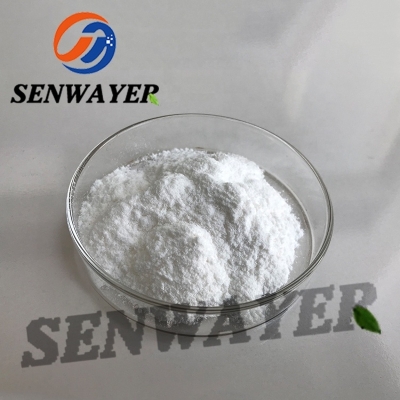-
Categories
-
Pharmaceutical Intermediates
-
Active Pharmaceutical Ingredients
-
Food Additives
- Industrial Coatings
- Agrochemicals
- Dyes and Pigments
- Surfactant
- Flavors and Fragrances
- Chemical Reagents
- Catalyst and Auxiliary
- Natural Products
- Inorganic Chemistry
-
Organic Chemistry
-
Biochemical Engineering
- Analytical Chemistry
- Cosmetic Ingredient
-
Pharmaceutical Intermediates
Promotion
ECHEMI Mall
Wholesale
Weekly Price
Exhibition
News
-
Trade Service
In 2020, the outbreak of the new crown epidemic has not affected the pace of China's health care reform, health care reform in a steady and orderly manner, the state issued a number of doctors and patients, medicine, high-value supplies, medical insurance payment methods, commercial insurance, the release of these policies will trigger what effects, the ultimate goal is what? How will the healthcare industry respond in the future? On August 27th the State Administration of Medical Security issued the Guidance on establishing and improving the mechanism for the protection of basic medical insurance outpatient assistance for employees (draft for comments), and the main contents of the Opinion Draft are threefold: 1. The scope of use of individual accounts is to be extended to family members;
Policy Effect: Once this draft of the consultation is issued, causing controversy, as an individual employee, the money to the personal account is indeed less, the money into the health insurance fund account will undoubtedly increase, will further ease the pressure of the health insurance fund;
the scope of application of individual accounts can be extended to family members, then the utilization rate of basic medical insurance personal accounts will be greatly increased, improve the efficiency of the use of health insurance funds.
Pharmaceutical supplies reform 1. High-value consumables collection: October 16, 2020, the National High-value Medical Supplies Joint Procurement Office issued the "National Organization Coronary Bracket Centralized Band Procurement Document (GH-HD2020-1)," for the variety of cobalt-chromium alloy or platinum-chromium alloy material, the type of drug for repatin and its derivatives of the crown stent, opened in Tianjin on November 5.
is understood to have seen the biggest drop of 93 per cent in the crown brace.
second batch of high-value medical supplies is in the pipeline.
, the relevant departments issued "on the implementation of high-value medical supplies, the second batch of centralized procurement data rapid collection and price monitoring notice" (hereinafter referred to as "Notice").
According to the Notice, the second batch of medical supplies collection category will be greatly expanded, in the first batch of vascular intervention class, ophthalmology class, etc. on the basis of the addition of artificial hip joints, artificial knee joints, matchers and other six categories, the relevant departments are currently on the real use of consumables data collection, in order to estimate the next round of band procurement demand.
2.4 plus 7 city drug collection in November 2018, the "4 plus 7 city drug centralized procurement document" was released, which opened the beginning of the centralized drug procurement.
two years later, on November 13, 2020, the State Health Security Administration issued a reply to recommendation No. 5468 of the Third Session of the 13th National People's Congress, 3 batches of national collection included a total of 112 drugs, according to the agreed procurement volume estimates, annual savings of about 53.9 billion yuan.
of access to the National Health Insurance Drug Catalog was held in Beijing from December 14 to 16, with the negotiations on drugs related to cancer, mental illness, ophthalmology, pediatrics and other drug varieties.
According to the list of declared drugs that have been adjusted and reviewed by the State Health Insurance Administration in 2020, more than 700 lists of Western and Chinese medicines in and out of the catalogue have passed the formal review, including 12 drugs included in the New Coronary Pneumonia Diagnosis and Treatment Program (Trial 7th Edition).
Policy effect: high-value consumables collection has been brewing for a long time, high-value supplies "eat rebates" scandals continue to appear, with gold sales phenomenon can not be curbed, high-value consumables collection has undoubtedly become a "crowding water" weapon, from the source of price to reduce the cost of health insurance, to reduce the cost of medical treatment, so that patients "see sick", to plug the loss of health insurance funds loophole.
Health Insurance Payment Method Reform On June 18, the Notice of the Office of the National Health Insurance Administration on the Issue of the Sub-group (CHS-DRG) Sub-group Program (version 1.0) on the issuance of medical security disease diagnosis (version 1.0) (Medical Insurance Office Issued No. 29 of 2020) (hereinafter referred to as the Notice) was issued at the Information Center of the National Health Insurance Administration.
"Notice" requires the pilot cities to refer to the CHS-DRG sub-group to develop local DRG sub-groups, but also directly using the CHS-DRG sub-group to carry out local DRG paid national pilot work.
19 October, the State Health Insurance Administration issued a Notice of the Office of the National Health Insurance Administration on the Issuance of the Total Budget of the Regional Points Act and the Pilot Work Programme for Paying by Disease Score (hereinafter referred to as the Notice).
the notice explicitly requires that the total regional health insurance budget and the point method be combined in 1-2 years' time to realize the multi-composite payment method based on the value-added of the disease in hospital.
November 4, the State Health Insurance Administration released a list of 71 cities that pay for the cost of disease.
November 9th, the Office of the National Health Insurance Administration issued the National Health Insurance Pay-per-Disease Value (DIP) Technical Specifications and the DIP Disease Catalog (version 1.0) policy effect: whether DRG or DIP, the implementation of the pilot reform of health insurance payment methods will more or less change the phenomenon of excessive medical care in hospitals.
Health insurance will buy medical services from hospitals into "sick groups" or "diseases" such as standardized products, through "payment" as a grasping hand, to urge hospital doctors to change the "induced medical" thinking, promote the fine management of hospitals, curb the phenomenon of excessive medical treatment, improve the efficiency of the use of health insurance funds.
On December 9th, the State Council adopted the Regulations on the Supervision and Administration of the Use of Medical Security Funds (Draft), which established the rights and responsibilities of the medical insurance departments, designated pharmaceutical institutions, insured personnel, etc., and stipulated that medical security services should be strengthened in accordance with the principle of the people, and medical insurance funds should be settled and allocated in a timely manner to improve the quality of service. It calls for strengthening supervision and social supervision, strictly prohibiting the deception of medical insurance funds through forgery, alteration of medical documents or fictitious medical services, and increasing discipline for illegal and illegal activities by ordering the return of funds, suspension of medical insurance settlement, fines, revocation of the qualifications of fixed-point pharmaceutical institutions, and so on, so as to manage the use of medical insurance funds and safeguard the legitimate rights and interests of the masses in medical security.
effects: strengthen the supervision and supervision of targeted medicine, medical structure and insured individuals for malicious fraud, and establish administrative and regulatory barriers for the safety of medical insurance funds.
Health Insurance Structural Reform 1. New Regulations on Serious Illness Insurance On November 5, the Regulations on the Use of the Definition of Diseases for Major Illness Insurance (the 2020 Revision) (hereinafter referred to as the "New Regulations"), and the Chinese Experience Rate of Major Illnesses in the Insurance Industry (2020) (hereinafter referred to as the "New Serious Illness Table") were issued simultaneously.
this new specification and the new serious disease table have three major changes.
one: the number of diseases expanded to 28 plus 3.
new specification, the original definition of 25 serious diseases was expanded to 28 severe diseases and 3 mild diseases: thyroid cancer was graded according to severity.
change three: minor claims do not exceed the insured amount of 30%.
2. National Standing Committee: To promote the expansion of personal insurance quality, accelerate the development of commercial health insurance Premier Li Keqiang on December 9 presided over an executive meeting of the State Council, the deployment of measures to promote the expansion of personal insurance quality and sound development, to meet the diverse needs of the people, first, to accelerate the development of commercial health insurance.
support the development of more insurance products for major diseases, do a good job with basic medical insurance and other complementary supplements, improve urban and rural residents of major diseases insurance coverage capacity.
promote the development of commercial health insurance products adapted to the needs and affordability of the wider ageing community.
encourage insurance companies to include reasonable medical expenses outside the health insurance directory.
promote the development of health insurance and service levels through the orderly opening up to the outside world and the strengthening of international cooperation.
is to speed up the construction of commercial old-age insurance into the third pillar of old-age security in accordance with the requirements of unified norms.
is to enhance the long-term investment capacity of insurance funds, prevent the speculative use of insurance funds, strengthen asset and liability management, strengthen risk prevention and control.
: Commercial insurance is the key force to supplement old-age care and supplement medical care, and helps to improve the multi-level social security system.
to promote the expansion, quality and steady development of commercial personal insurance is not only conducive to serving people's livelihood, but also an important part of the national strategy to actively respond to the aging of the population.
: In 2009, China launched a new round of reform of the medical and health system.
11 years since the new medical reform, China's basic medical security system has covered more than 1.3 billion people, and the participation rate has stabilized at 95%.
has brought a real sense of access to nearly 1.4 billion people: the world's largest basic health care network covers both urban and rural areas, and the main health indicators of the population are generally better than the average for middle- and high-income countries. According to the 2019 health insurance fund statistics, the total income and total expenditure of the basic medical insurance fund for the whole year were 233.3487 billion yuan, 1994.573 billion yuan, respectively, and the cumulative balance at the end of the year was 269.1211 billion yuan.
The income of the basic medical insurance fund for employees for the whole year was 148.8387 billion yuan, up 9.94% YoY, of which the income of the co-ordination fund was 918.584 billion yuan (the medical insurance co-ordination fund refers to the medical insurance fee paid by all employers in an integrated area for employees, net of the rest after it was allocated to the personal account); Yuan, up 10.37 percent year-on-year, of which 712.030 billion yuan was spent on the co-ordination fund, and the cumulative balance at the end of the year was 218.5029 billion yuan, of which the total balance of the co-ordination fund was 135.7379 billion yuan, and the cumulative balance of the personal account was 827.650 billion yuan.
, the income of the basic medical insurance fund for urban and rural residents was 845.100 billion yuan, up 7.71% YoY;
From the data point of view, China's health insurance co-ordination fund balance amount has maintained a steady balance, the people's money bag to see a doctor seems to be still "Shendian", but with china's social population aging trend is increasing, the elderly population aged 65 and over increased from 62.99 million in 1990 to 88.11 million in 2000, the proportion of the total population increased from 5.57 percent to 6.96 percent, the current Chinese people have entered the elderly type.
estimates that by 2040, the proportion of the population aged 65 and over will exceed 20 per cent of the total population.
same time, the aging trend of the elderly population is becoming increasingly evident: the number of people aged 80 and over is increasing at a rate of 5 per cent per year and will increase to more than 74 million by 2040.
the country's low fertility rate has fallen, with the latest survey showing that 14.65 million people were born in 2019, 580,000 fewer than in 2018, and the birth rate was 10.48 per 1,000 live births, down 0.46 percentage points from 2018.
birth rate of 10.48 per 1,000 live births is the lowest since the founding of New China 70 years.
the future, with the rising proportion of china's elderly population, the pressure on health care and old-age care will increase, and fewer people will actually be able to pay for health insurance funds and pension funds (lower birth rates and fewer employed people).
Health insurance personal account unit deposit part into the medical insurance co-ordination, the development of commercial medical insurance, to combat the promulgation of administrative regulations on medical insurance fraud, the reform of medical insurance payment methods, medicine and supplies to increase the collection of efforts, which are for the future of China's health insurance fund security and bottom-up measures to do.
the future, new directions and trends will become more and more apparent: 1. Commercial insurance will usher in new opportunities, with the development of China's Internet medical, as well as the continuous development of medical groups, the United States Caesar model will be china's high-end medical development direction, Caesar model is a "medical and commercial health insurance" in one medical service system, health management and health insurance integration, ordinary people in need of higher-end medical services and more expensive drugs, commercial insurance for it to provide more levels of protection, play a common effect of commercial insurance, ease the pressure of basic medical insurance funds; Outpatient visits will be greatly increased, the employee health insurance personal account can be used after outpatient reimbursement and DRG payment, originally did not need inpatient treatment but because of a higher proportion of reimbursement and hospitalization will be significantly reduced, especially the patients who accounted for 10% of the patients with chronic diseases; The opportunities and challenges of medical institutions coexist, and the reform of medical insurance payment methods will force hospital informationization and doctors' diagnosis and treatment methods, hospital management methods to make changes Whether DRG and DIP are "constraints" or "developments" for medical institutions needs to be taken seriously by hospitals.
how large private medical groups rely on medical teams and advanced medical technology, the use of commercial insurance to let patients pay for their own "service", which is also a new direction in the future.
4. Medicine, consumables collection will be the industry reshuffle, the rules of the game will also be rebuilt, medicine and supplies manufacturers need to think about how to improve the quality of price reduction at the same time highlight the heavy siege, seize the big cake of health insurance.
。







